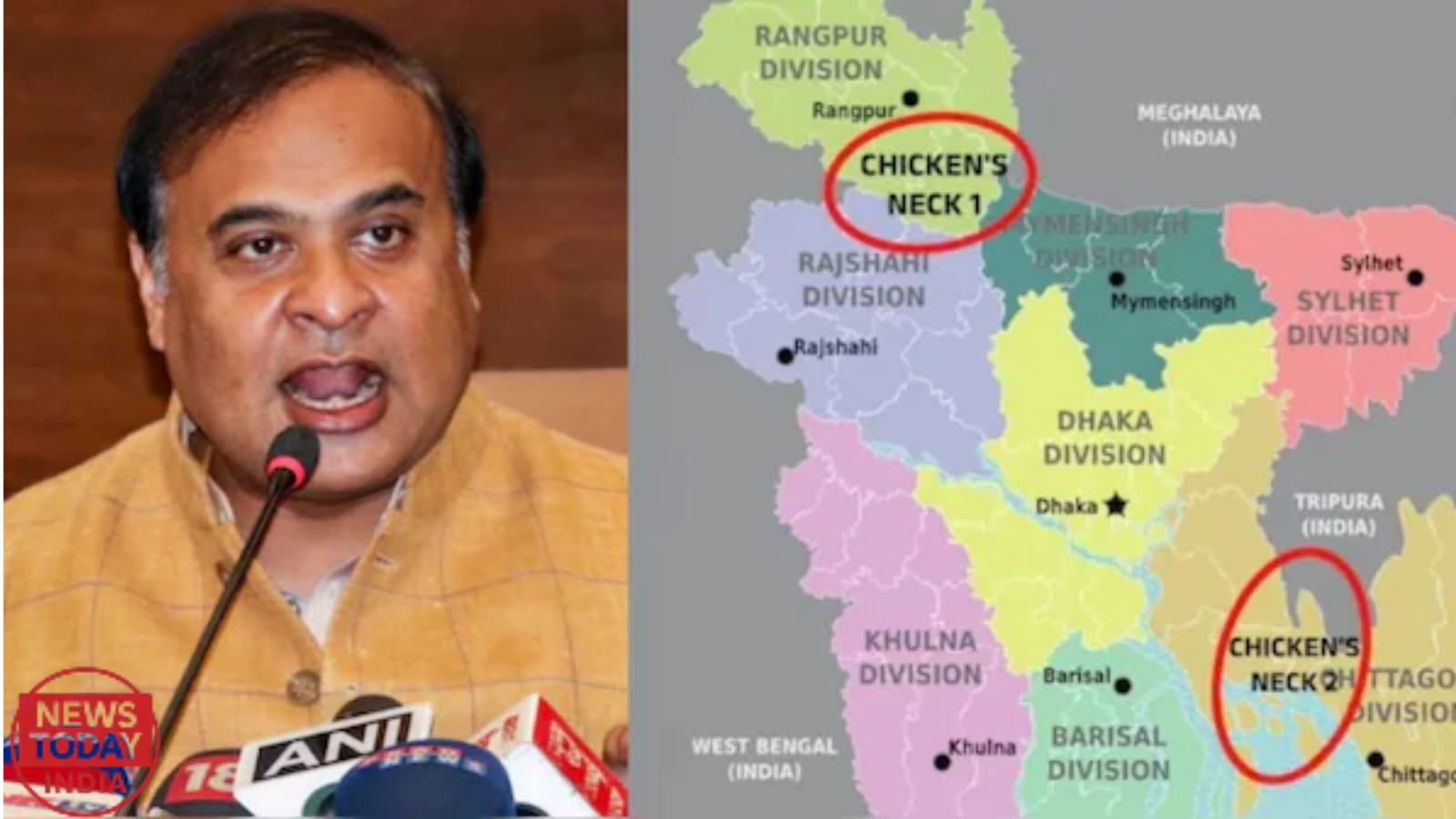Subtotal $0.00
India and Bangladesh are facing new tensions after Assam Chief Minister Himanta Biswa Sarma made strong comments about two vulnerable land corridors in Bangladesh, calling them “Chicken’s Necks.” These remarks come in response to statements from Bangladesh’s interim leader, Muhammad Yunus, about India’s northeastern states. This article explains the issue in simple language, covering the strategic importance of these corridors and why they matter for both countries.
What Are the Chicken’s Necks?
The term “Chicken’s Neck” refers to narrow strips of land that are critical for a country’s connectivity but easy to disrupt. India has its own Chicken’s Neck, called the Siliguri Corridor, a 22-km-wide strip in West Bengal. This corridor connects mainland India to its eight northeastern states: Arunachal Pradesh, Assam, Manipur, Meghalaya, Mizoram, Nagaland, Sikkim, and Tripura. It carries roads, railways, and communication lines, making it vital for India. However, it is surrounded by Nepal, Bhutan, and Bangladesh, which makes it a sensitive area.
Assam CM Sarma pointed out that Bangladesh also has two such weak points:
- Chittagong Corridor: A very narrow strip connecting mainland Bangladesh to Chittagong, its biggest port city. Chittagong handles over 90% of Bangladesh’s trade, so this corridor is crucial for its economy. It is close to Meghalaya and only 30-40 km from Sabrum in Tripura, making it an easy target.
- Rangpur Corridor: A 90-km stretch between Meghalaya’s South West Garo Hills and West Bengal’s South Dinajpur. This corridor links different parts of Bangladesh and is another key connection.
Sarma warned that if Bangladesh tries to target India’s Siliguri Corridor, India could block these two corridors, which would hurt Bangladesh’s economy and connectivity.
Why Are Tensions Rising?
The tensions started when Muhammad Yunus, Bangladesh’s interim leader, visited China and called India’s northeastern states “ Restrictions apply. Please contact the website operator for more information. “landlocked.” He suggested Bangladesh could act as a trade gateway for the region, hinting at closer ties with China. This worried India, as China is a rival and has interests near India’s borders.
Yunus’s comments followed the fall of Sheikh Hasina’s government in August 2024, after which India-Bangladesh relations worsened. There have been reports of attacks on minorities, especially Hindus, in Bangladesh, which has added to the strain. Additionally, China is reportedly helping Bangladesh revive an old airbase in Lalmonirhat, just 100 km from the Siliguri Corridor. This airbase could be used for surveillance, raising security concerns for India.
Sarma’s Strong Response
Sarma responded sharply to Yunus, saying Bangladesh’s corridors are more vulnerable than India’s. He mentioned India’s successful “Operation Sindoor” against terror groups in Pakistan to show India’s military strength. He also dismissed Bangladesh’s claims on Indian territory, stating that such talk is meaningless and that India could make similar claims.
Why These Corridors Matter
The Siliguri Corridor is critical for India because it links the Northeast to the rest of the country. Any disruption could isolate the region, affecting supplies and security. For Bangladesh, the Chittagong corridor is vital for trade, as Chittagong is the country’s main port. The Rangpur corridor connects important administrative areas. Blocking either could cause major problems for Bangladesh.
The situation is serious because both countries rely on these corridors. India is also concerned about China’s growing influence in Bangladesh, especially with the Lalmonirhat airbase, which could help China monitor Indian military activities.
What’s Next for India and Bangladesh?
Sarma has called for stronger infrastructure, like tunnels and railways, to protect the Siliguri Corridor. India has also deployed advanced defense systems, like the S-400, in the region. Meanwhile, Bangladesh’s alignment with China could lead to more tensions if the situation isn’t handled carefully.
Both nations need to talk and resolve these issues to avoid further conflict. The Chicken’s Necks highlight how geography plays a big role in national security and why both countries must protect their key corridors.
Conclusion
The India-Bangladesh tensions over the Chicken’s Necks show how delicate relations are between the two neighbors. Assam CM Sarma’s warning is a reminder of the strategic importance of these narrow land corridors. As India strengthens its defenses and Bangladesh builds ties with China, both sides must work to maintain peace and cooperation in the region.












